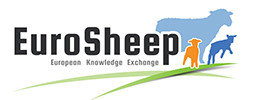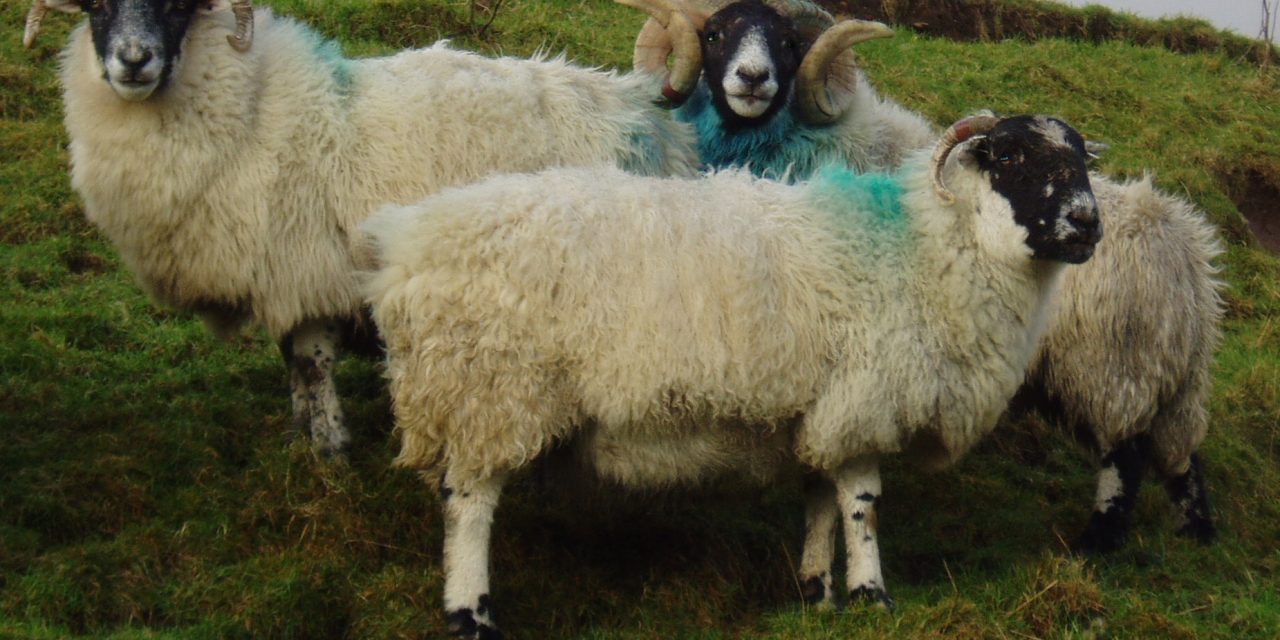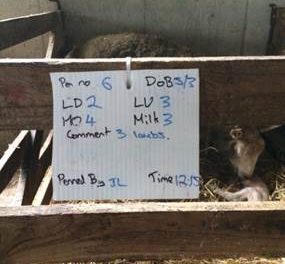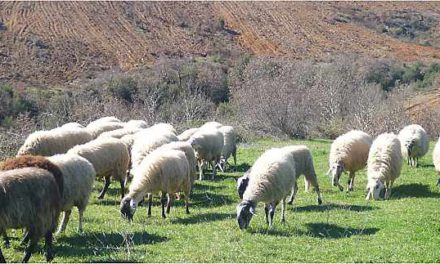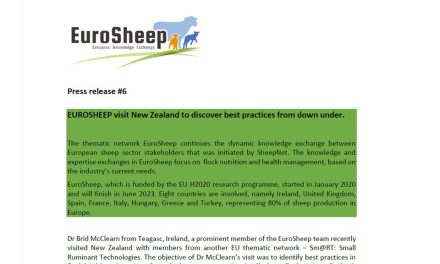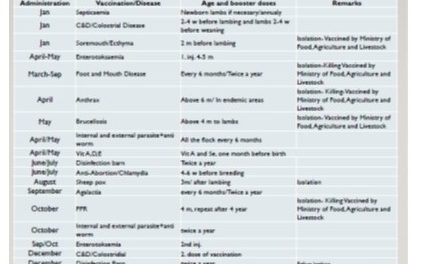This post is also available in:
![]()
![]()
![]()
![]()
Country: Spain
Dairy or/and meat sheep: Dairy and meat
Source of information: Bibliography; Technical Services
Level of solution:
x |
Knowledge |
x |
Practical |
|
|
Just Being Tested |
Aim: Achieve a suitable body condition of sheep at mating to increase the fertility rate.
Description:
- What is implemented;
The BCS of every sheep must be assessed before the start of the mating season; BCS should be ≥2.5 and/or gaining weight at mating. Therefore, sheep with BCS below 2.5 should receive supplementary feeding before matings (flushing). - How is implemented;
Sheep below 2.5 will be supplemented with 250-400 g. of concentrate daily (cereal grain); for the rest of the sheep, keep balanced feeding and avoid changes after the critical time of implantation of the embryos is over. - When is it implemented.
At least 1 month before the expected mating period, and after the critical time of implantation of the embryos is over (19 days after the mating, approximately)
Expected benefits:
10-20% higher fertility rates and prolificacy, and a more concentrated lambing season
Prerequisites and/or limits (knowledge, training, capabilities, cost, management, facilities, equipment, etc.)
- Education and regular practice or training of farmers regarding BCS assessment;
- Facilities:
- Sheep need to be managed individually to be assessed;
- Allotments.
- Additional feeding costs for purchased concentrates or on-farm high quality feedstuff resources available (pastures, crops, etc.).
Specific references:
Borowczyk, E., Caton, J. S., Redmer, D. A., Bilski, J. J., Weigl, R. M., Vonnahme, K. A., … Grazul-Bilska, A. T. (2006). Effects of plane of nutrition on in vitro fertilization and early embryonic development in sheep. Journal of Animal Science, 84(6), 1593–1599. https://doi.org/84/6/1593 [pii]
Lassoued, N., Rekik, M., & Ben Salem, H. (2009). Influence of supplementary feeding and the ram effect on conception rate of Barbarine ewes during spring mating. Options Méditerranéennes. Séries A, (85), 405–409. Retrieved from http://om.ciheam.org/om/pdf/a85/00801035.pdf
Molina, A., Gallego, L., Torres, A., & Vergara, H. (1994). Effect of mating season and level of body reserves on fertility and prolificacy of Manchega ewes. Small Ruminant Research, 14(3), 209–217. https://doi.org/10.1016/0921-4488(94)90043-4
Pitta, D. W., Barry, T. N., Lopez-Villalobos, N., & Kemp, P. D. (2005). Effects on ewe reproduction of grazing willow fodder blocks during drought. Animal Feed Science and Technology, 120(3–4), 217–234. https://doi.org/10.1016/j.anifeedsci.2005.02.030
Tips & Tricks
Sentinel breeds to monitor BCS
Use of technology for productivity
Expected impacts
| Benefit | |||||||
| Benefit expected | Increase productivity fertility prolificacy mortality better feed management |
||||||
| System | |||||||
| Is the solution suitable for various production systems | Y | ||||||
| If no – for which system | The thresholds depend on the aptitude of the breed | ||||||
| Cost | |||||||
| What are the asset costs | <100 | ||||||
| What are the maintenance costs | ? | ||||||
| Any limits to its applicability | |||||||
| Work Load | |||||||
| Farmers | Service provider/tech.-vet-others | ||||||
| How much time is required to prepare and implement the solution | < 1 day | ||||||
| How many people is needed to implement the solution? | 1 | ||||||
| Timing | |||||||
| How long it takes to get results? | >=1week | ||||||
| How long it takes to see an effect on sheep productivity? | current production period | ||||||
| Equipment/Facility | |||||||
| Farmers | Service provider/technicians-vet-others | ||||||
| What kind of equipment/tool are necessary? | chart, leaflet, handling pens | chart, leaflet | |||||
| Skill/Knowledge-Training (farmer) | |||||||
| Does the solution need any specific skill/knowledge or training? | Yes | ||||||
| How much time will be required for training | 1 day | ||||||
| Wider Environment | |||||||
| Is there any particular regulation link to the solution? | no | ||||||
| Does the solution need any particular structure or organisation? | no | ||||||
